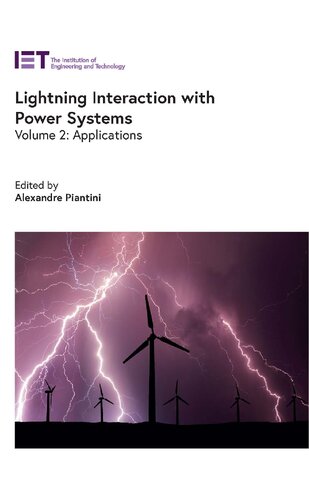

Most ebook files are in PDF format, so you can easily read them using various software such as Foxit Reader or directly on the Google Chrome browser.
Some ebook files are released by publishers in other formats such as .awz, .mobi, .epub, .fb2, etc. You may need to install specific software to read these formats on mobile/PC, such as Calibre.
Please read the tutorial at this link: https://ebookbell.com/faq
We offer FREE conversion to the popular formats you request; however, this may take some time. Therefore, right after payment, please email us, and we will try to provide the service as quickly as possible.
For some exceptional file formats or broken links (if any), please refrain from opening any disputes. Instead, email us first, and we will try to assist within a maximum of 6 hours.
EbookBell Team

5.0
70 reviewsThe need to improve the reliability and robustness of power systems and smart grids makes protection of sensitive equipment and power transmission and distribution lines against lightning-related effects a primary concern. Renewable electricity generation capacity has been increasing all over the world, and lightning can cause failures either by hitting the turbines or panels directly or inducing transients on the control systems that lead to equipment failure, malfunction or degradation.
This two-volume set assesses how global lightning may respond to global climate change, provides thorough coverage of the lightning phenomenon and its interaction with various objects, and covers methods for the effective protection of structures and systems. It is a valuable reference for researchers in the fields of lightning and power systems, for transmission and distribution line engineers and designers, and is a useful text for related advanced courses.
Volume 1 covers fundamentals and modelling of lightning interaction with power systems. This Volume 2 addresses various applications including the application of the Monte Carlo method to lightning protection and insulation coordination practices; lightning interaction with power substations; lightning interaction with power transmission lines; lightning interaction with medium-voltage overhead power distribution systems; lightning interaction with low-voltage overhead power distribution networks; lightning protection of structures and electrical systems inside of buildings; lightning protection of smart grids; lightning protection of wind power systems; lightning protection of photovoltaic systems; measurement of lightning currents and voltages; application of the FDTD method to lightning studies; and software tools for lightning performance assessment.